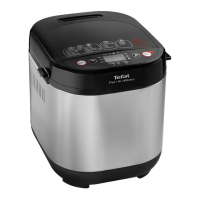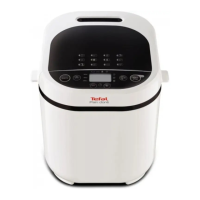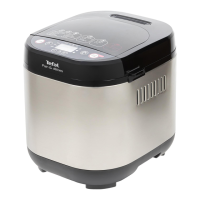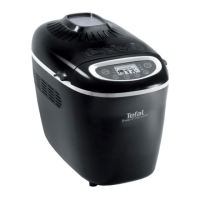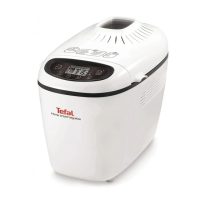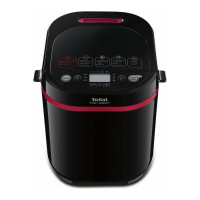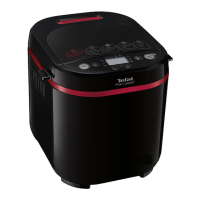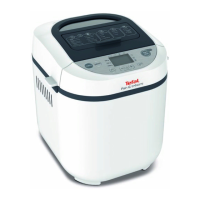150
intolerance to the gluten (celiac disease sufferers) present in several
cereals (wheat, barley, rye, oat, kamut, spelt, etc.).
It is important to avoid cross-contamination with flours containing
gluten. Exercise special care cleaning the pan and the kneading paddle,
as well as all utensils being used to make gluten-free breads and cakes.
You must also ensure that the yeast used contains no gluten.
Gluten-free recipes have been developed based on the use of
preparations (also called ready-to-use mixes) for gluten-free bread
that are either Schär or Valpiform type.
• Blends of flour types must be sifted with the yeast to prevent lumps.
• When the program is launched, it is necessary to assist the kneading
process: scrape down any unmixed ingredients on the sides towards the
centre of the pan using a non-metallic spatula.
• Gluten-free bread cannot rise as much as a traditional bread. It will be
of a denser consistency and lighter colour than normal bread.
• All premix brands do not yield the same results: the recipes may have
to be adjusted. It is therefore recommended to conduct some tests (see
example below).
Example: adjust the quantity of liquid.
Exception: cake batter must remain quite liquid.
Too liquid OK Too dry
